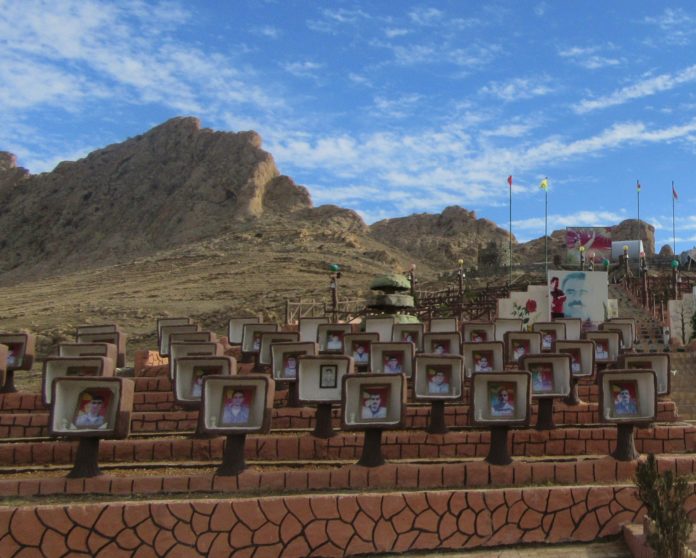
From North Africa to the Caucasus, Turkey’s recently acquired drone technology has transformed a number of conflicts.
Since 1984, the Kurdistan Workers’ Party (PKK) has been in conflict with the Turkish state in a war that has cost the lives of over 40,000 people and led to widespread destruction in Turkey’s southeast.
The PKK was formed in 1978 in response to the oppression of Kurdish political and cultural rights within Turkey.
The group, which began as a Marxist organization seeking an independent Kurdish state, now aims to establish an autonomous libertarian-socialist entity in Turkey’s Kurdish majority regions.
After almost forty years of fighting, the Turkish military, NATOs second largest standing army, has been unable to land a decisive blow against the Kurdish militants.
The PKK has traditionally employed guerilla tactics in the mountainous areas that encompass the Kurdish majority regions in southeastern Turkey and in northern Iraq, where it is based.
These guerilla tactics, aided by the rugged terrain, has meant the Kurdish group has been difficult to dislodge from its headquarters in Iraq’s Qandil Mountains.
However, since 2016, newly acquired drone technology has allowed Turkey to take the initiative in its war against the PKK.
The Bayraktar TB2 drone
In defiance of US restrictions on armed Unmanned Aviation Vehicles (UAVs), Turkey has managed to indigenously produce its own “Bayraktar TB2” drones.

The drones are named after a former MIT student from Turkey, Selchuk Bayraktar, who has been credited as the driving force behind Turkey’s rapid advancement in the technology.
The TB2s, which can fire rockets at targets up to eight kilometres away, were first used against the PKK in late 2016.
The Turkish military now has a fleet of almost one hundred TB2s, which patrol the skies throughout Iraq and Turkey on an hourly basis.
The drones, which can carry a payload of over 50 KG, are also used as reconnaissance to identify targets for the Turkish air force.
Effects on the war with the PKK
Over the last four years the PKK has suffered increasingly high casualties in its war with the Turkish state.
The group’s efforts have been restricted by constant harassment from the skies. This is a far cry from the days when the guerillas were known to pass the time playing volleyball in their mountain bases.
In addition, a number of high profile members have been killed recently, including the two senior leaders who were assassinated by drone strike in Sulaymaniyah province this month.
In June of this year, the Turkish military sought to capitalise on its recent aerial success by launching Operation Claw Tiger, a limited ground invasion targeting the PKK in Iraq’s Kurdistan Region, which resulted in the seizure of territory along the Iraq/Turkey border.
Effects on civilians
Much of Turkey’s drone activity is unique in the world today in the sense that many strikes are carried out within its own borders and on its own citizens.
Meanwhile, in Iraq, a number of controversial attacks have taken place in civilian areas this year.
In Iraqi Kurdistan’s Sulaymaniyah Governorate, civilians recorded the dramatic moment when a Turkish drone strike hit a village market place as PKK members were passing through.
In Makhmour Refugee Camp, which hosts Kurds displaced from Turkey in the 1990s, PKK targets have been bombed extensively.
The disputed Sinjar region, where the PKK have maintained a presence since resisting the 2014 Isis attack on the Yazidis, has seen a number of Turkish airstrikes and targeted assassinations via drone strike.
These aerial bombardments are one of many factors complicating the return of Yazidi IDPs to their homes in Sinjar, a majority of whom still reside in camps across northern Iraq.
Syria
Drone power has been instrumental in Turkey’s recent military successes over the Kurdish-led Syrian Defence Forces (SDF) in Syria, which Turkey considers to be an affiliate of the PKK.
During the invasion of Kurdish-held Afrin in 2018, Turkish media claimed that TB2s accounted for more than 25% of all kills, allowing Turkey and its local allies to overcome the SDF.
In October 2019, Turkey invaded Syria once more, this time taking the towns of Tal Abyad and Ras al-Ayn.
The flat terrain around these towns meant the Kurdish-led SDF were often easy targets for their enemies’ aerial power, allowing the Turkish military to seize the entire area in the space of a week.
These invasions have led to claims of demographic reengineering, as hundreds of thousands of Kurds were uprooted and replaced by Arabs and Turkmen from other regions in Syria.
Those who remain are subject to the rule of Turkey’s highly unpopular local allies, known as the Syrian National Army (SNA), some of whose members have past links to Isis and other extremist groups.
Many of the Kurds and Yazidis who decided to remain in their homes – in spite of the Turkish invasion – have been targeted by SNA-orchestrated kidnappings and extortion.
Since a ceasefire brought an end to Turkey’s most recent Syrian invasion in October 2019, drones have been used for a number of assassinations of individuals associated with the Kurdish-led administration.
Eight recorded attacks have been carried out so far – in violation of the ceasefire agreement –
including the assassination of three women activists near Kobani in June.
Libya and Nagorno Karabakh: drones and mercenaries give Turkey the upper hand
In Libya’s Civil War Turkish drones and Syrian mercenaries reversed Khalifa Haftar’s advance on Tripoli and quickly sent his army eastwards in retreat.
In the ongoing conflict in Nagorno-Karabakh, Turkey has employed the same combination of TB2s and Syrian mercenaries in support of Azerbaijan.
This has led to huge losses for Artasakh’s defenders, with over 1.000 ethnic Armenian soldiers killed thus far, ending a 25 year impasse and allowing Azerbaijan to reclaim large swathes of territory.
The drone strikes have been so effective that some commentators have speculated as to whether the technology has brought an end to the age of the tank in modern warfare.
Tanks and military convoys are sitting ducks for the TB2s and successful strikes are often uploaded to the social media accounts Turkish state media, where they are celebrated amid an atmosphere of escalating jingoism.
Overall, the domestic production of TB2s has allowed Turkey to circumvent arms restrictions and to assert its increasingly aggressive foreign policy on its neighbours.
Without this cutting edge technology, it is difficult to imagine that Erdogan would be able to simultaneously carry out military operations across the region, breaking decades-long stalemates in the Middle East and the Caucasus while tipping the balance of power in Libya.




